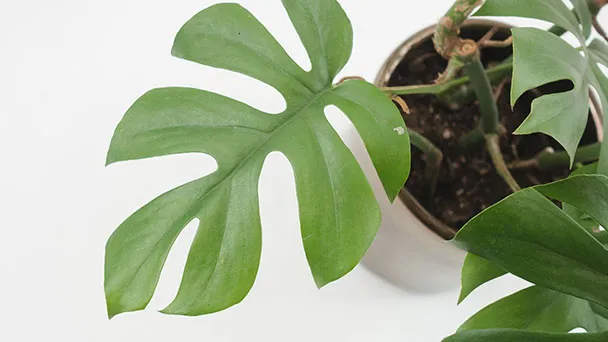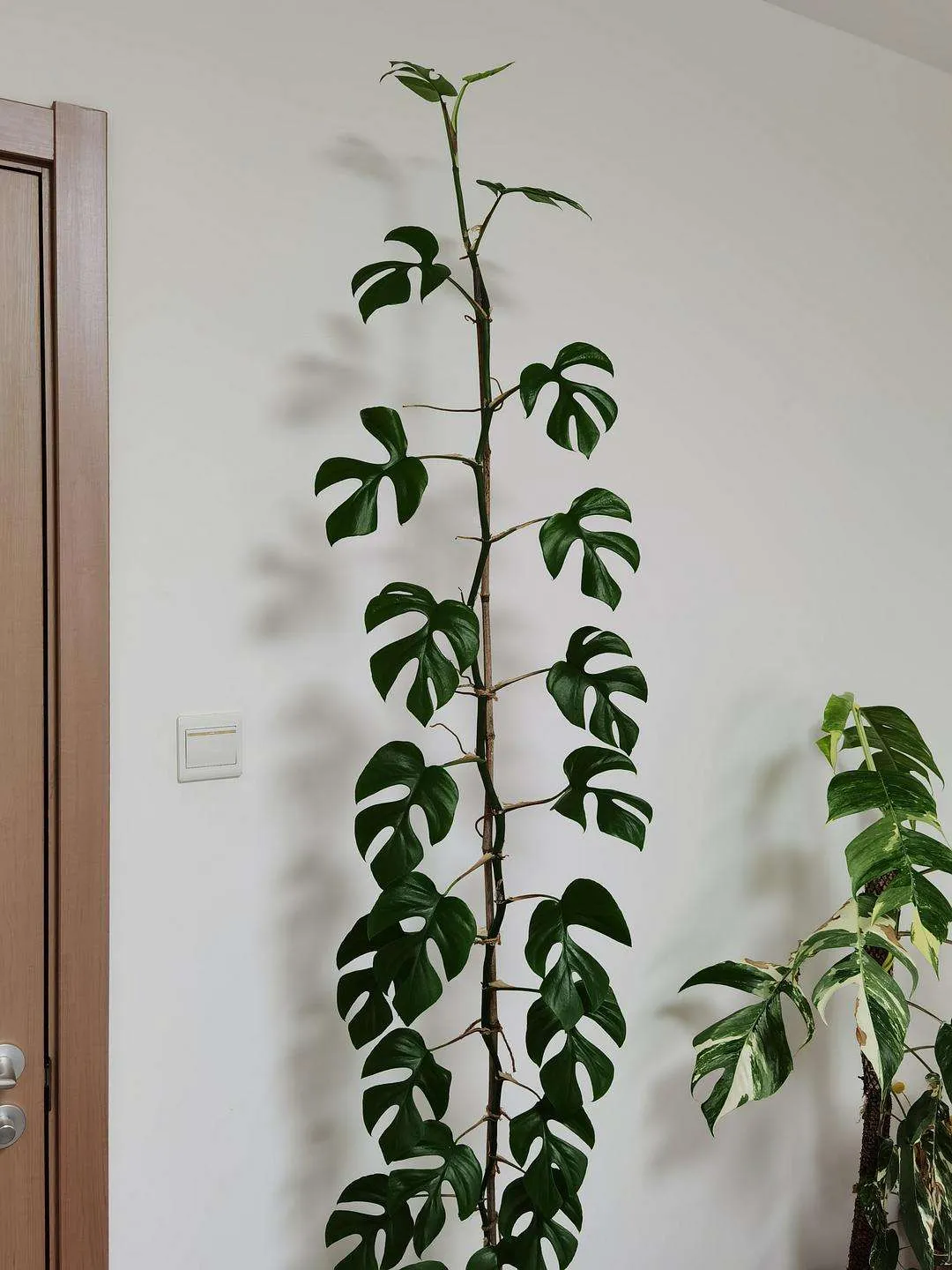How To Save My Rhaphidophora Tetrasperma Brown Spots?
Written by Ivy
Dec 28 2021

Brown spots in Rhaphidophora Tetrasperma leaves are related to plant growth conditions. The soil carrying bacteria, unventilated environment, strong light and excessive watering and fertilization in winter will affect plant growth and lead to brown spots in leaves. Rhaphidophora Tetrasperma shall be moved to a warm and ventilated place, the soil shall be changed or the pesticide shall be used to eliminate the harm, the shading work shall be done well in summer and the reasonable conservation shall be carried out in winter.
Brown spots on Rhaphidophora Tetrasperma leaves are usually due to poor environment. If the light is strong, the plant needs to be moved to the semi shade to receive the scattered light. If the temperature is too low, keep warm to avoid frostbite. If it is due to insufficient nutrients, fertilizer should be applied every 15-20 days. If the root system is developed, it needs to be properly pruned after removing the pot.
Rhaphidophora Tetrasperma is suitable for growing in semi shade environment. If it receives direct light for a long time, its leaves are easy to be burned, resulting in brown spots. In this case, it is necessary to put the plant in a cool place in time to avoid further exposure. At the same time, spray water properly and maintain good ventilation so as to recover as soon as possible.
Read More:
How Much Light Does Rhaphidophora Tetrasperma Need
Read More:
How To Save My Rhaphidophora Tetrasperma Root Rot?
Brown spots on Rhaphidophora Tetrasperma leaves are usually due to poor environment. If the light is strong, the plant needs to be moved to the semi shade to receive the scattered light. If the temperature is too low, keep warm to avoid frostbite. If it is due to insufficient nutrients, fertilizer should be applied every 15-20 days. If the root system is developed, it needs to be properly pruned after removing the pot.
Strong Light
Too much light will damage the leaves and make the leaves grow spots. Rhaphidophora tetrasperma is not sun resistant and is afraid of direct exposure to strong light. Strong light will stimulate the leaves and affect the extension of the leaves. If it is serious, it will sunburn the tissue of the leaves. If the leaves are sunburned, spots will grow. Timely move the blade to a warm and ventilated position for maintenance, and do a good job of shading in summer.Rhaphidophora Tetrasperma is suitable for growing in semi shade environment. If it receives direct light for a long time, its leaves are easy to be burned, resulting in brown spots. In this case, it is necessary to put the plant in a cool place in time to avoid further exposure. At the same time, spray water properly and maintain good ventilation so as to recover as soon as possible.
Read More:
How Much Light Does Rhaphidophora Tetrasperma Need

Low Temperature
Rhaphidophora Tetrasperma is native to tropical areas. It has weak adaptability to low temperature. If the temperature is lower than 15 ℃, it will stop growing, and if it is lower than 0 ℃, it will be frostbitten. If it is brown spots caused by frostbite, put the plant in a warm place indoors or put a bag on the upper part to keep warm to avoid further freezing.Nutrient Deficiency
Rhaphidophora Tetrasperma cannot grow without sufficient nutrients. If it is not fertilized, the plant will produce brown spots, diseases and pests may occur, and brown spots will also appear on the leaves. In daily maintenance, we must pay attention to fertilization, once every 15-20 days. The fertilizer is mostly rotten cake fertilizer water and sprayed on the leaf surface with potassium dihydrogen phosphate.Developed Roots
For rhaphidophora Tetrasperma, developed roots are the key to good plant growth, but if the roots are intertwined, it will also affect its growth. At this time, you need to take the plant out of the flowerpot, check the root condition, cut off the excess root whiskers with scissors, and plant it in the flowerpot again after the wound is dry.Read More:
How To Save My Rhaphidophora Tetrasperma Root Rot?
Poor Ventilation Effect
In fact, the reason is very simple. We plant Rhaphidophora Tetrasperma indoors, and the ventilation effect is very poor. In addition, our family planting is not well matched with soil. A little more watering will cause siltation and rotten roots. Some rotten roots will be reflected on the leaves, because the roots are in the soil and we can't find them in time, The leaves of rhaphidophora tetrasperma will show brown spots one by one, and the spots gradually expand and spread to the whole leaf. The main reason for Rhaphidophora Tetrasperma is rotten roots, which is a main reason. Another reason is that we have poor ventilation in indoor farming, and spray regularly with spray cans. The water sprays out larger, and the water beads stick on it for a long time. If there is no dry condition, it will not evaporate. This causes a Brown Spots on its leaves, which is the decay of moisture and water droplets.Read More:
How To Water Rhaphidophora Tetrasperma?
Latest Updated
- Benefits of Bugleweed - 7 Science-backed Health Benefits
- Bugleweed Dangers & Side Effects - Is It Poisonous?
- How to Plant Evergreen Trees - What You Should Know
- When to Plant Evergreens - Grow Guide for Evergreen Trees
- 12 Wonderful Evergreen Shrubs for Your Garden
- 12 Popular Evergreen Plants with Pictures for Beginners
- When And How To Prune A Lilac Bush Like a Pro
- How to Grow & Care for Lilac Vine (Hardenbergia Violacea)
- Japanese Lilac Tree (Syringa Reticulata) Care & Propagation Guide
- Shumard Oak Pros and Cons - What to Know
Popular Articles
- Winter maintenance of Antirrhinum Majus
- How to Grow Terminalia Mantaly Tree
- How to Grow and Care for Crossostephium Chinense
- How to grow Antirrhinum Majus in spring
- Peristeria Elata (Dove Orchid) Profile: Info & Care Guide
- Underwatered Snake Plant (Sansevieria Trifasciata) - Signs And How To Fix
- How to Care for Brazilian Jasmine Plant (Mandevilla Sanderi)
- How to Grow & Care for Graptopetalum Purple Delight in Summer
- Rosa Chinensis (China Rose): Plant Growing & Care Tips
- How to Care for Baby Sun Rose (Aptenia Cordifolia)